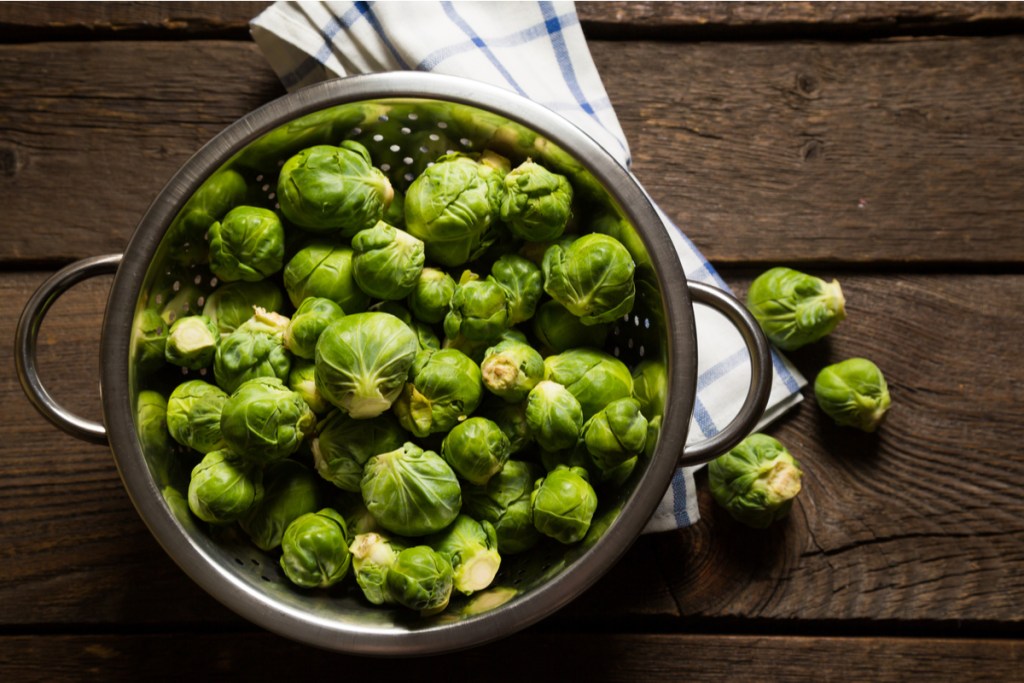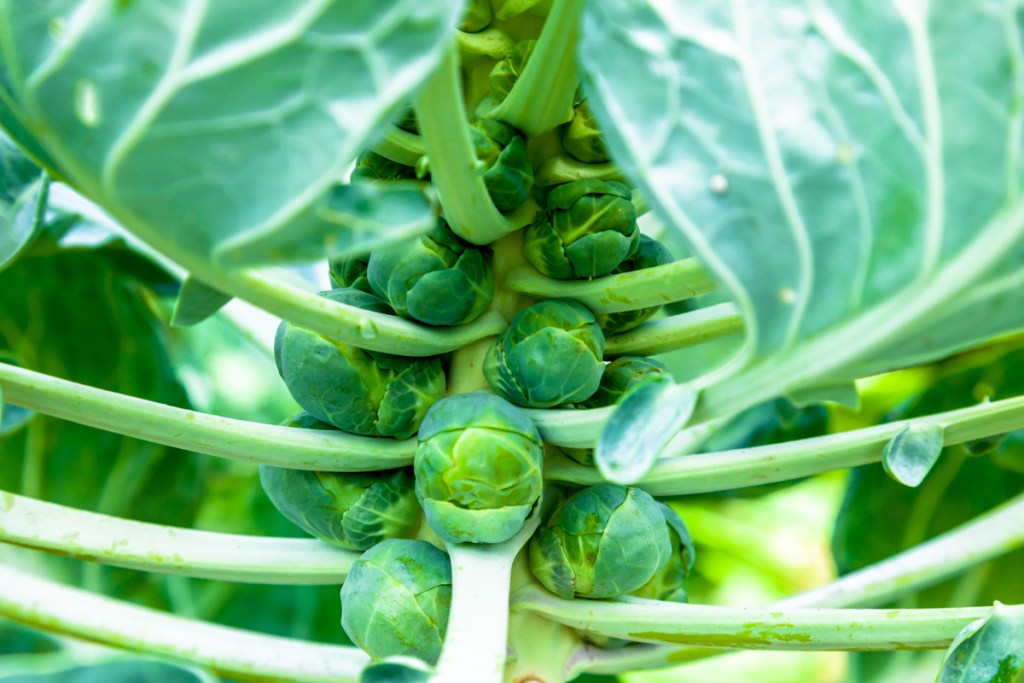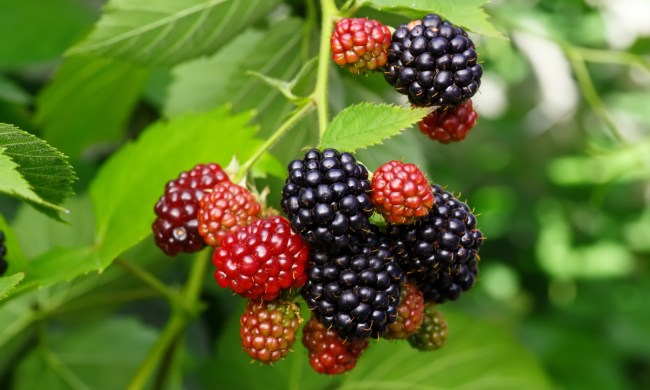Despite how polarizing Brussels sprouts are known to be (people seem to either love them or hate them), they’ve been part of meals and recipes dating back to the 14th century. Brussels sprouts are part of the cabbage family and can be grown well in most vegetable gardens in hardiness zones 2 through 9. They’re slow-growing, though, which means needing to plan for a longer growing season than you would for other plants. But if you time it well, you’ll be wowing your family and friends with fresh Brussels sprout dishes during the fall season.

Why you should plant Brussels sprouts in your garden
Like many other vegetables, Brussels sprouts have a high nutrient profile that makes them one of the best foods to grow in your garden. They’re high in vitamin K, which is great for bone health, and high in vitamin C. Brussels sprouts are especially known for their antioxidant properties, which can help with reducing stress in your cells and body.
Although they have a reputation for lacking taste (to put it kindly) due to their bitter component, they’re quite beneficial for your body. And over the years, Brussels sprouts have actually started tasting better. But how? The way you prepare them indeed matters, as it does with any food; however, scientists in the Netherlands have worked hard to find varieties of Brussels sprouts with the most desirable qualities so that they can be more appealing and pleasant for people to eat.
Cooking Brussels sprouts so they amaze your guests
For the most part, Brussels sprouts don’t need a whole lot to be able to look good and taste great. If you’re short on time, you can make something as simple as a sautéed Brussels sprout dish like this one from Delish. The recipe yields three servings, but the prep and cook time total about 25 minutes. Depending on the size of your dinner party, you may have to double-up the recipe or serve them as an appetizer where a little goes a long way.
If you have a little more time to prepare, you can try making some creamed Brussels sprouts. Delish’s recipe takes a little over an hour to make but is a perfect side dish for any dinner. The Brussels sprouts are full of nutrients, but the cream-style dresses them up and makes them that much more appealing for people who are unsure about trying them.
How to grow Brussels sprouts so they thrive
Because Brussels sprouts can grow in USDA hardiness zones 2 through 9, they grow well in temperatures between 45 and 75 degrees Fahrenheit. Brussels sprouts aren’t, however, a warm-weather crop; they’ll become more bitter when exposed to high heat. When you consider that they take around three to four months to grow to a harvestable size, it can get quite difficult depending on the climate you live in.
For that reason, a lot of gardeners choose to start their Brussels sprouts indoors in May and transplant them outdoors in early fall. In other climates, you can get away with a mid-June transplanting. It helps, too, that a light frost improves the flavor of the crop. Just keep an eye on them and the weather to make sure that things don’t stay too cold for too long, as you’ll want to harvest them before or just after the first frost of the fall. All in all, growing Brussels sprouts isn’t too difficult.
Light needs: At least six hours of full sun per day; too much shade stunts growth
Water needs: Water regularly, around one to two inches per week
Soil needs: Well-draining, moist soil
What month do you plant Brussels sprouts?
What month you plant Brussels sprouts will depend on what climate you live in. You want to keep their preferred temperatures in mind and make sure you don’t plant them when they’ll be exposed to the hottest points of the summer. It’s best to start your Brussels sprout seeds indoors during late spring, transplanting them to your garden bed sometime between mid-June and fall.
Planting Brussels sprouts outdoors will vary quite a bit depending on the weather, so be mindful of checking daily temperatures so you know when they’re consistently within the desired range. That’s when it’s best to transplant.
Do Brussels sprouts come back every year?
Brussels sprouts are biennial, which means their natural growing cycle is two years. If you live in a climate where winter temperatures never drop below 15 degrees Fahrenheit, you can expect your Brussels sprout plants to regrow for a second fall harvest. After that, they’ll go to seed.
If you want to continue growing Brussels sprouts, you can collect the seeds, dry them out, and plant them the following season for a new crop.

How to tell when Brussels sprouts are ready for harvest
Your Brussels sprout plant will grow to full height (around 12 inches) before producing sprouts. Because they grow from the bottom of the plant up, when you start harvesting, you should pluck the ones closest to the ground first and work your way toward the top. Brussels sprouts are ready to be harvested when they’re roughly the size of large marbles. You can always look at Brussels sprouts in the grocery store to get a good visual for a harvestable size.
Properly harvesting Brussels sprouts
There are two ways you can harvest Brussels sprouts: twisting and cutting. If you choose to twist your Brussels sprouts off the plant, you can remove the leaf below first to give yourself more room and make it a bit easier. Simply grab the sprout, twist, and pull from the plant. If you’re worried about damaging the crop, though, you can always use a sterilized pair of shears or a hori-hori knife to cut the Brussels sprout free.
Problems you may run into while growing Brussels sprouts
Like other members of the cabbage family, Brussels sprouts are prone to pests like aphids, cabbage loopers, cabbage root maggots, cabbage worms, and Harlequin bugs. The good news is that since the sprouts aren’t produced until the plant reaches its full height, you’ll have time to tackle any problems or infestations as long as you diligently inspect your crop. If you notice any pests, find a Brussels-sprout-friendly insecticidal soap to use on the plants to remove them.
Most of all, don’t let their reputation deter you! You may find that growing Brussels sprouts at home and having them fresher than from the store makes a world of difference. Scientists have been working hard to make this nutritious crop more palatable, and you can gain quite a lot by having them around.


